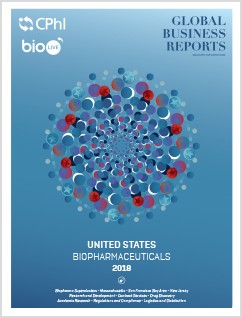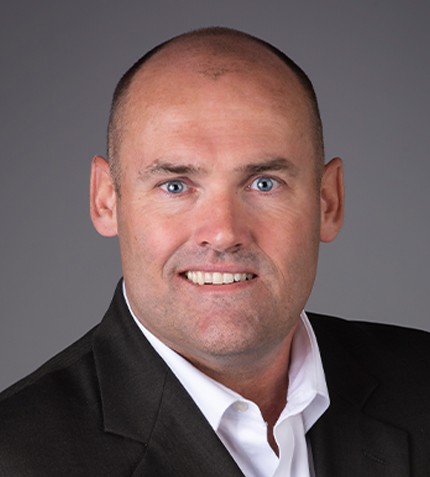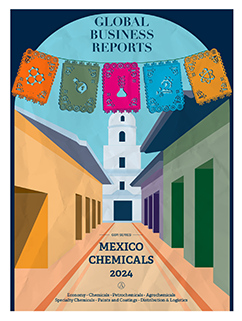
"Two factors drive resistance: overutilization and long links of usage for prolonged periods of time. While all drugs will eventually build a resistance, choosing the appropriate populations and using them in the right way helps to delay the onset of resistance. At the end of the day, as our CSO, Tom Parr, will say “The bugs will always win.” This is why it is so important to continue developing antibiotics and attempt to stay one step ahead of the bacteria."
RELATED PUBLICATION
ARTICLES FROM THIS PUBLICATION
- The Winning Formula: Building the Number One Biopharmaceutical Supercluster
- Finding Funding: The Diversification of the Biotech Financing Landscape
- Infectious Diseases: Addressing Growing Resistance
- Patient Selection: The Right Drug for the Right Patient
- From Volume to Value: A Shift in Innovation Focus in the U.S.
Ankit Mahadevia & Cristina Larkin
CEO & CHIEF COMMERCIAL OFFICER, SPERO THERAPEUTICS
Could you provide a brief introduction to Spero Therapeutics and the circumstances surrounding its conception?
Spero Therapeutics is a multi-asset, clinical-stage biopharmaceutical company that is focused on identifying, developing and commercializing novel treatments for multi-drug resistant (MDR) bacterial infections. Spero was founded by Dr. Ankit Mahadevia with a thesis that the antibiotic market was being underserved despite the growing rates of resistance, significant incentives being offered for development, excellent translational medicine and lack of competition in the space.
The company was started with these things in mind and our mission was to keep to three main principals underpinning the assets in our portfolio. The first is that we do not compete in the generics space – we want to make sure that the products we are developing are differentiated. The second is that we go after areas of high unmet needs. Lastly, we look at areas with a strong commercial story. This really sets us apart. We are developing drugs that are clinically meaningful, with clear regulatory paths and significant commercial viability.
How has Spero Therapeutics’ pipeline developed according to market needs?
There are currently three main areas of greatest unmet need in infection. The first unmet need is the resistance to oral Gram-negative antibiotics that we use to prevent hospitalization and/or help transition the patient home after hospitalization. An example is a patient that visits her local healthcare provider or ER with a urinary tract infection after exhausting all viable oral options. The healthcare provider is faced with the dilemma of either hospitalizing the patient unnecessarily, or discharging without treatment. The consequences of this are both clinical and economical. Drugs that once filled this void are now seeing resistance at anywhere from 10% to 15% in the community setting and 30% to 35% in the hospital setting. It is a scary proposition to expose these patients to a hospital setting or prolonged hospital visits where even worse bugs exist. This is a multi-billion dollar market and offers a real opportunity to advance in a space that hasn’t seen a new oral Gram-negative agent in more than two decades. SPR994, which is the most advanced product in our portfolio, addresses this unmet need and could be the first oral carbapenem approved in the United States and European Union.
The second unmet need is the growing and deadly group of Gram-negative bacteria in the hospital setting where an IV therapy is needed. The market lacks a pipeline to address these highly resistant bugs – our second group of portfolio products, which we call the Potentiator Platform (SPR741 & SPR206), are positioned to fill this void within the hospital setting.
The last unmet need is the somewhat overlooked rare infectious disease space. This includes conditions such as Non-Tuberculous Mycobacterium (NTM) – an orphan disease with fewer than 100,000 people in the United States affected. It is a debilitating, sometimes chronic, disease for those affected. There are currently no approved agents. Most physicians are not even sure what benefits the patient will gain from available generic agents and welcome an opportunity to have new approved agents. We have a third compound, an oral agent (SPR720), that will address this area.
What is the timeline like in terms of bringing these products to market?
SPR994, our lead asset, is currently in a Phase 1 trial. The active pharmaceutical ingredient of SPR994 has been approved in Japan for the last eight years; it is currently approved in pediatric patients for respiratory tract infections and ear infections. What is really unique is that our partner that we licensed the compound from had done extensive clinical, pharmacokinetic and safety work in both adults in pediatrics so we already have a very good understanding of its safety, tolerability, and pharmacokinetic properties. We are going into our clinical studies with a lot of good insights. We expect to report the Phase 1 results in mid-2018. The FDA has also enabled a pathway whereby we may bypass Phase 2 and conduct a single Phase 3 in complicated urinary tract infections following a pre-Phase 3 meeting for approval in the U.S., and we hope to obtain similar guidance from EU authorities. An important point to highlight is that Spero is positioned to transition from a Phase 1 company to a Phase 3 company in the next 12 months.
Once the candidates come into the market, do you have an expectation of the length of their efficacy?
There is no accurate prediction of how the drug will perform over time, but we can take a historic look according to the class of antibiotics. SPR994 is a carbapenem and the first carbapenem was approved in the early 1980s. To date, we are only seeing resistance to the most common organism for urinary tract infections - E. coli, for example, at less than 1% resistance. Other organisms such as Acinetobacter baumanii or Pseudomonas aeruginosa that are more common in the hospital setting for infections such as hospital-acquired pneumonia (HAP) show much higher rates so it is really dependent on the setting of care, infection and the type of organism.
Two factors drive resistance: overutilization and long links of usage for prolonged periods of time. While all drugs will eventually build a resistance, choosing the appropriate populations and using them in the right way helps to delay the onset of resistance. At the end of the day, as our CSO, Tom Parr, will say “The bugs will always win.” This is why it is so important to continue developing antibiotics and attempt to stay one step ahead of the bacteria.
What are Spero Therapeutics’ primary objectives for the next three to five years?
Our main goal is to bring forward our current candidates, with SPR994 being the key asset in the company. We have milestones that we need to meet and the company is very focused on making sure that we accomplish what we have set out to do. We are also always looking out for new opportunities. Our mission is to become a leading, standalone company in the antimicrobial space and, we will continue to drive towards that mission.












